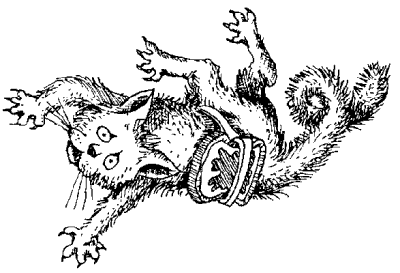 |
Science Frontiers ONLINE No. 111: May-Jun 1997 |
|
|
Levitation And Levity!
New Scientist's "Feedback" page, our favorite source for remarkable insights into cosmic phenomena, noted recently that the magazine Omni had announced the winner of its "Theories" contest. The winning entry was revolutionary, to say the least. In the words of the inventor:
"When a cat is dropped, it always lands on its feet, and when toast is dropped, it always lands with the buttered side facing down. I propose to strap buttered toast to the back of a cat; the two will hover, spinning inches above the ground."
There is a deep profundity in this arrangement. S. Voss recognized immediately that a perpetual motion machine had been proposed. He set out to find a flaw. Somehow, energy was being supplied to keep the cat-toast armature turning. Voss observed that any practical cat-toast motor would have to be suspended over a very expensive carpet, for the simple reason that the probability of the toast landing buttered-side down is well known to be proportional to the cost of the carpet. (Linoleum is very poor in this application.) Furthermore. to maintain the machine's efficiency, the rug would have to be frequently cleaned of falling cat hairs. Carpet cleaning is energy-intensive, and it is here that energy must be supplied, thereby nullifying the perpetual-motion claim!
(Anonymous; New Scientist "Feedback" columns for October 19 and November 16, 1996)
